
LOADING ...
In response to evolving domestic opinion, eMedals Inc has made the conscious decision to remove the presentation of German Third Reich historical artifacts from our online catalogue. For three decades, eMedals Inc has made an effort to preserve history in all its forms. As historians and researchers, we have managed sensitive articles and materials with the greatest of care and respect for their past and present social context. We acknowledge the growing sentiments put forth by the Canadian public and have taken proactive actions to address this opinion.
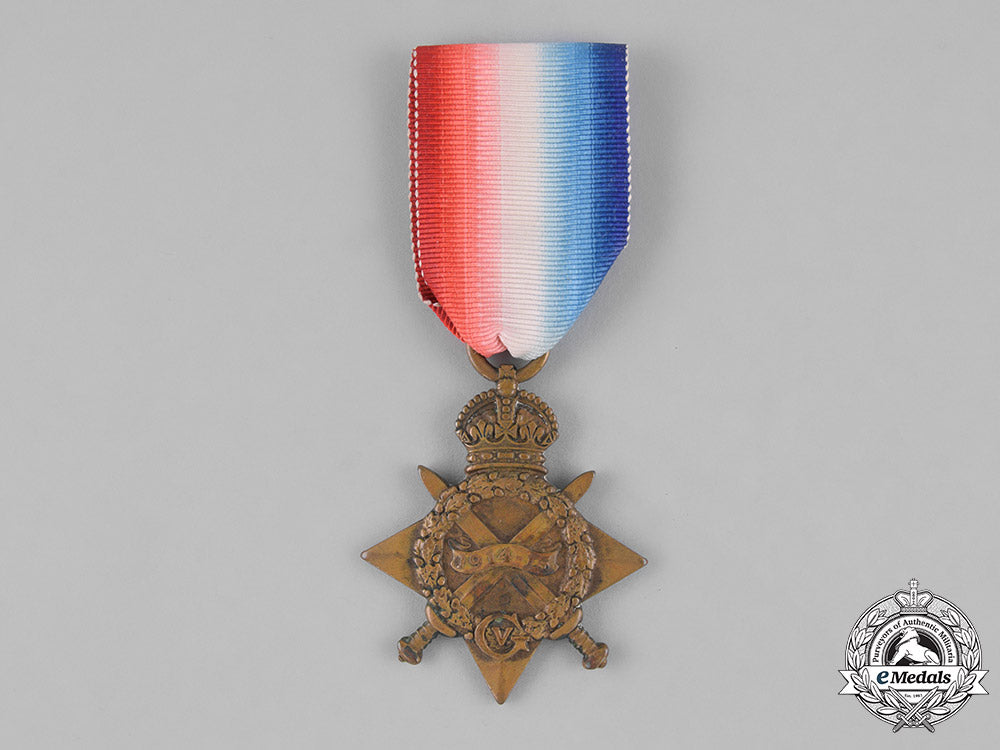
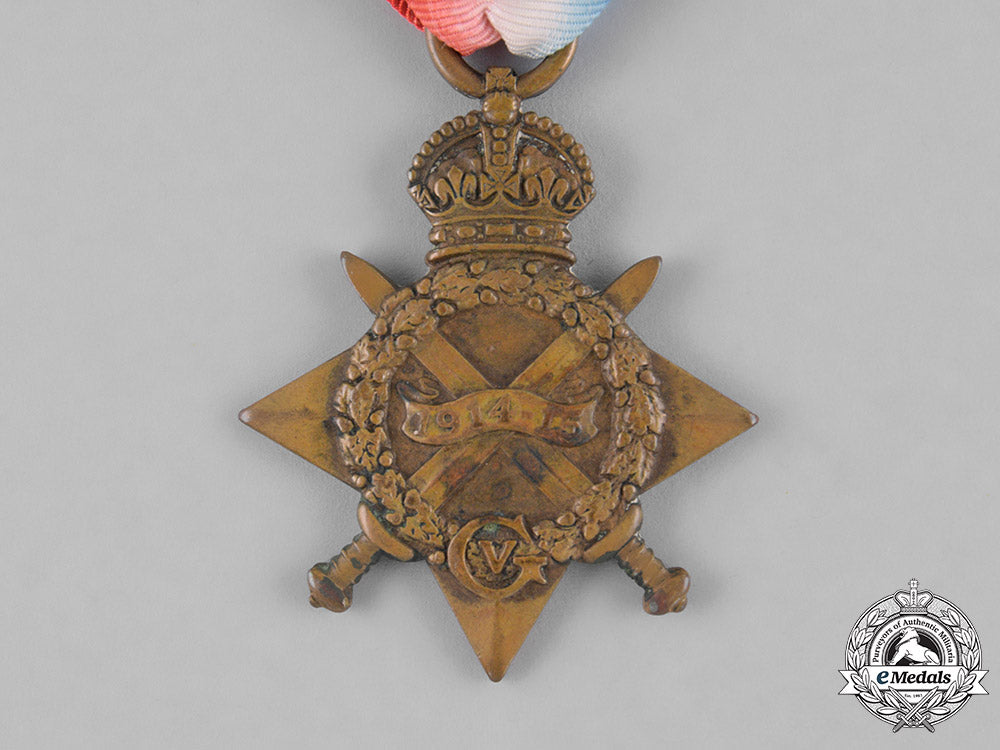
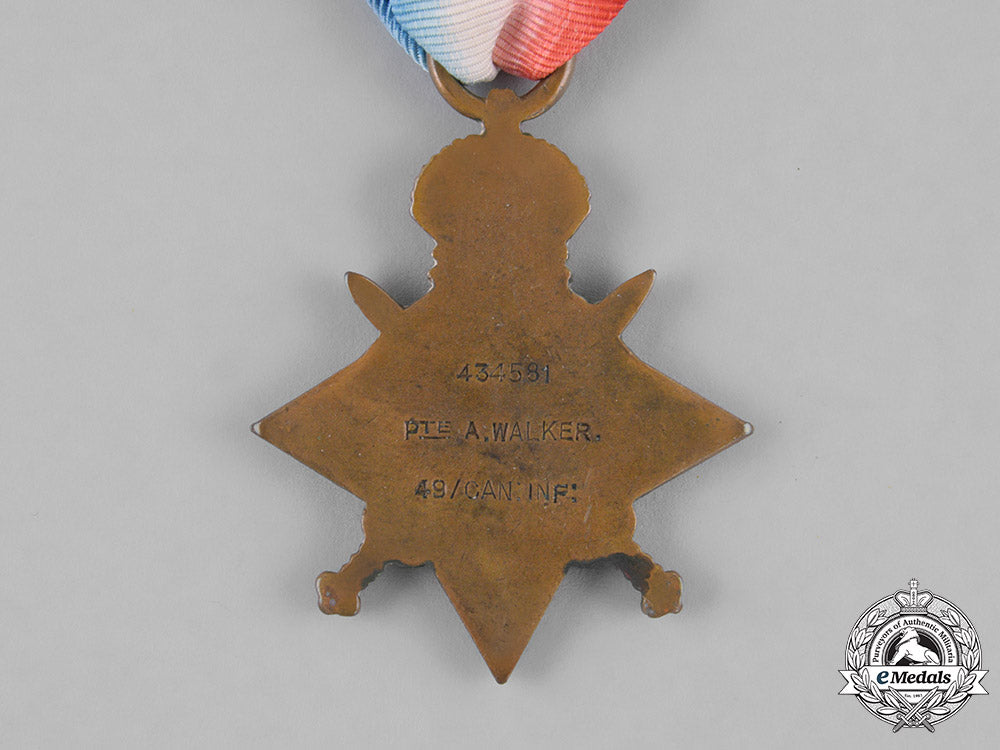

Canada. A First War 1914-15 Star, To Private Andrew Walker, 49Th Infantry Battalion, 50Th Infantry Battalion
Canada. A First War 1914-15 Star, To Private Andrew Walker, 49Th Infantry Battalion, 50Th Infantry Battalion
SKU: ITEM: C5222
Current Bid:
Your Max Bid:
Bid History:
Time Remaining:
Couldn't load pickup availability
Shipping Details
Shipping Details
eMedals offers rapid domestic and international shipping. Orders received prior to 12:00pm (EST) will be shipped on the same business day.* Orders placed on Canadian Federal holidays will be dispatched the subsequent business day. Courier tracking numbers are provided for all shipments. All items purchased from eMedals can be returned for a full monetary refund or merchandise credit, providing the criteria presented in our Terms & Conditions are met. *Please note that the addition of a COA may impact dispatch time.
Shipping Details
eMedals offers rapid domestic and international shipping. Orders received prior to 12:00pm (EST) will be shipped on the same business day.* Orders placed on Canadian Federal holidays will be dispatched the subsequent business day. Courier tracking numbers are provided for all shipments. All items purchased from eMedals can be returned for a full monetary refund or merchandise credit, providing the criteria presented in our Terms & Conditions are met. *Please note that the addition of a COA may impact dispatch time.
Description
Description
(434581 Pte A. WALKER. 49/CAN:INF:). Naming is officially impressed. Spotting, surface wear, light contact, replacement ribbon, better than fine.
Footnote: Andrew Walker was born on March 2, 1877 in Aberdeenshire, Scotland. He signed his Attestation Paper as a Private (434581) with the 50th Infantry Battalion "Calgary Regiment", on January 27, 1915 in Calgary Alberta, at the age of 37, naming his next-of-kin as Mrs. Isabella Walker of North Bog, Fintray, Aberdeen, Scotland, stating that had six months previous service with the Witwatersrand Rifles Regiment in South Africa, that he was not married, that his religion was Presbyterian and that his trade was that of Machinist. The Battalion was raised and mobilized in Calgary, Alberta under the authority of G.O. 86, July 1, 1915. The Battalion left Canada on October 27, 1915 under the command of Lieutenant-Colonel E.G. Mason with a strength of 41 officers and 1,036 other ranks. He was transferred to the 23rd Reserve Battalion on January 27, 1915. Private Walker was drafted to the 49th Infantry Battalion on December 21, 1915, arriving at the Canadian Base Depot in France on the 22nd. He left the Canadian Base Depot on December 24th, arriving with the 49th Infantry Battalion on the 26th. Private Walker was wounded "slightly" in his right arm on June 3, 1915 and remained at duty until the 5th, when he received localized treatment. Three and a half months later, Private Walker was in action at the Somme on September 15, 1916. While consolidating his position, he was struck in the right arm by a bullet, causing a compound fracture to the humerus (upper arm) and was able to walk back to the dressing station and have the wound dressed. He was transferred and admitted to No. 22 General Hospital at Camiers on September 17th, where he was diagnosed with a "compound fracture" in his right arm. He was invalided to England aboard His Majesty's Hospital Ship Braemar Castle and posted to the Canadian Casualty Assembly Centre, taken on strength at Folkestone on September 23rd. He was initially admitted to 1st Western General Hospital at Liverpool on September 23rd, before being transferred and admitted to Cambridge Hospital at Aldershot on September 28th. His "arm was splintered and the wound healed sufficiently to be moved to the Auxiliary Hospital at Waverley Abbey, where it was discovered that the fracture had not united". He was posted to the 49th Infantry Battalion at Hastings on March 10, 1917. He returned to Cambridge Hospital and was recommended for invaliding to Canada. On April 17, 1917 he had been "radiographed", with the "humerus" (upper arm) already having been plated. On May 25, 1917, the attending physician noted that "the wound continued to discharge so much so that as of September 8, 1917, the plate and loose bone were removed". In the Fall of 1917, after having been either hospitalized at or attached to Cambridge Hospital for over a year, Private Walker was transferred and admitted to the Canadian Convalescent Hospital, Bear Wood, Wokingham, Berkshire, on October 2, 1917. It was noted on October 7th that his "right elbow is ankylosed (bones or a joint become stiffened or united by ankylosis) and very little movement is present in the shoulder. Wrist movement fair, but is unable to flex fingers". He was declared "not fit for duty" and that he be recommended for invaliding to Canada. After seven and a half weeks at Bear Wood, he was transferred and admitted to No. 5 Canadian General Hospital at Liverpool on November 23rd, where he would remain until it was time to return to Canada, embarking for home in late December. Upon arrival in Canada, he was posted to Military District No. 13 in Calgary, Alberta and admitted to the Military Hospital, on January 5, 1918. In his Medical History of an Invalid, dated March 21, 1918 at the Military Hospital in Calgary, Alberta, the attending physician noted that Walker's "right arm (was) ankylosed at a right angle. Scar on inner side of the arm about four inches long." He recommended two months' further treatment attached to the O.C.M.H., declaring him "temporarily unfit" for General Service, Service Abroad and Home Service. An X-Ray Report issued at Ogden on April 12, 1918 noted the "loss of power movement in his right arm". He was taken on strength at Military District No. 13 in Calgary, Alberta, on April 18, 1918, initially admitted to Calgary General Hospital and then officially admitted to Ogden Convalescent Military Hospital on May 10th, where daily dressings were performed. In his Medical History of an Invalid, dated September 10, 1918 at Ogden, the attending physician noted that Walker had "limitation of movement of the right shoulder and elbow and index finger of the right hand" and that he "can close the fist, but only with difficulty. His grip is only about 20% strong." His "diminution" of his hearing was also discussed: "He complains of a ringing in ears at all times". He continued to be categorized as unfit for General Service, Service Abroad and Home Service. He was discharged from Ogden Military Convalescent Hospital on September 11, 1918, then posted to the Casualty Company in Calgary on September 17th. Private Andrew Walker, 49th Infantry Battalion, 50th Infantry Battalion was discharged from His Majesty's service as "Being medically unfit for further service on account of wounds received in action", at Military District No. 13 in Calgary, Alberta, on September 27, 1918, credited with having served in Canada, England and France. For his First World War service, he was awarded the 1914-15 Star, the British War Medal and the Victory Medal. He died on January 27, 1949, at the age of 71, ironically, thirty-four years to the day that he enlisted.
Description
(434581 Pte A. WALKER. 49/CAN:INF:). Naming is officially impressed. Spotting, surface wear, light contact, replacement ribbon, better than fine.
Footnote: Andrew Walker was born on March 2, 1877 in Aberdeenshire, Scotland. He signed his Attestation Paper as a Private (434581) with the 50th Infantry Battalion "Calgary Regiment", on January 27, 1915 in Calgary Alberta, at the age of 37, naming his next-of-kin as Mrs. Isabella Walker of North Bog, Fintray, Aberdeen, Scotland, stating that had six months previous service with the Witwatersrand Rifles Regiment in South Africa, that he was not married, that his religion was Presbyterian and that his trade was that of Machinist. The Battalion was raised and mobilized in Calgary, Alberta under the authority of G.O. 86, July 1, 1915. The Battalion left Canada on October 27, 1915 under the command of Lieutenant-Colonel E.G. Mason with a strength of 41 officers and 1,036 other ranks. He was transferred to the 23rd Reserve Battalion on January 27, 1915. Private Walker was drafted to the 49th Infantry Battalion on December 21, 1915, arriving at the Canadian Base Depot in France on the 22nd. He left the Canadian Base Depot on December 24th, arriving with the 49th Infantry Battalion on the 26th. Private Walker was wounded "slightly" in his right arm on June 3, 1915 and remained at duty until the 5th, when he received localized treatment. Three and a half months later, Private Walker was in action at the Somme on September 15, 1916. While consolidating his position, he was struck in the right arm by a bullet, causing a compound fracture to the humerus (upper arm) and was able to walk back to the dressing station and have the wound dressed. He was transferred and admitted to No. 22 General Hospital at Camiers on September 17th, where he was diagnosed with a "compound fracture" in his right arm. He was invalided to England aboard His Majesty's Hospital Ship Braemar Castle and posted to the Canadian Casualty Assembly Centre, taken on strength at Folkestone on September 23rd. He was initially admitted to 1st Western General Hospital at Liverpool on September 23rd, before being transferred and admitted to Cambridge Hospital at Aldershot on September 28th. His "arm was splintered and the wound healed sufficiently to be moved to the Auxiliary Hospital at Waverley Abbey, where it was discovered that the fracture had not united". He was posted to the 49th Infantry Battalion at Hastings on March 10, 1917. He returned to Cambridge Hospital and was recommended for invaliding to Canada. On April 17, 1917 he had been "radiographed", with the "humerus" (upper arm) already having been plated. On May 25, 1917, the attending physician noted that "the wound continued to discharge so much so that as of September 8, 1917, the plate and loose bone were removed". In the Fall of 1917, after having been either hospitalized at or attached to Cambridge Hospital for over a year, Private Walker was transferred and admitted to the Canadian Convalescent Hospital, Bear Wood, Wokingham, Berkshire, on October 2, 1917. It was noted on October 7th that his "right elbow is ankylosed (bones or a joint become stiffened or united by ankylosis) and very little movement is present in the shoulder. Wrist movement fair, but is unable to flex fingers". He was declared "not fit for duty" and that he be recommended for invaliding to Canada. After seven and a half weeks at Bear Wood, he was transferred and admitted to No. 5 Canadian General Hospital at Liverpool on November 23rd, where he would remain until it was time to return to Canada, embarking for home in late December. Upon arrival in Canada, he was posted to Military District No. 13 in Calgary, Alberta and admitted to the Military Hospital, on January 5, 1918. In his Medical History of an Invalid, dated March 21, 1918 at the Military Hospital in Calgary, Alberta, the attending physician noted that Walker's "right arm (was) ankylosed at a right angle. Scar on inner side of the arm about four inches long." He recommended two months' further treatment attached to the O.C.M.H., declaring him "temporarily unfit" for General Service, Service Abroad and Home Service. An X-Ray Report issued at Ogden on April 12, 1918 noted the "loss of power movement in his right arm". He was taken on strength at Military District No. 13 in Calgary, Alberta, on April 18, 1918, initially admitted to Calgary General Hospital and then officially admitted to Ogden Convalescent Military Hospital on May 10th, where daily dressings were performed. In his Medical History of an Invalid, dated September 10, 1918 at Ogden, the attending physician noted that Walker had "limitation of movement of the right shoulder and elbow and index finger of the right hand" and that he "can close the fist, but only with difficulty. His grip is only about 20% strong." His "diminution" of his hearing was also discussed: "He complains of a ringing in ears at all times". He continued to be categorized as unfit for General Service, Service Abroad and Home Service. He was discharged from Ogden Military Convalescent Hospital on September 11, 1918, then posted to the Casualty Company in Calgary on September 17th. Private Andrew Walker, 49th Infantry Battalion, 50th Infantry Battalion was discharged from His Majesty's service as "Being medically unfit for further service on account of wounds received in action", at Military District No. 13 in Calgary, Alberta, on September 27, 1918, credited with having served in Canada, England and France. For his First World War service, he was awarded the 1914-15 Star, the British War Medal and the Victory Medal. He died on January 27, 1949, at the age of 71, ironically, thirty-four years to the day that he enlisted.
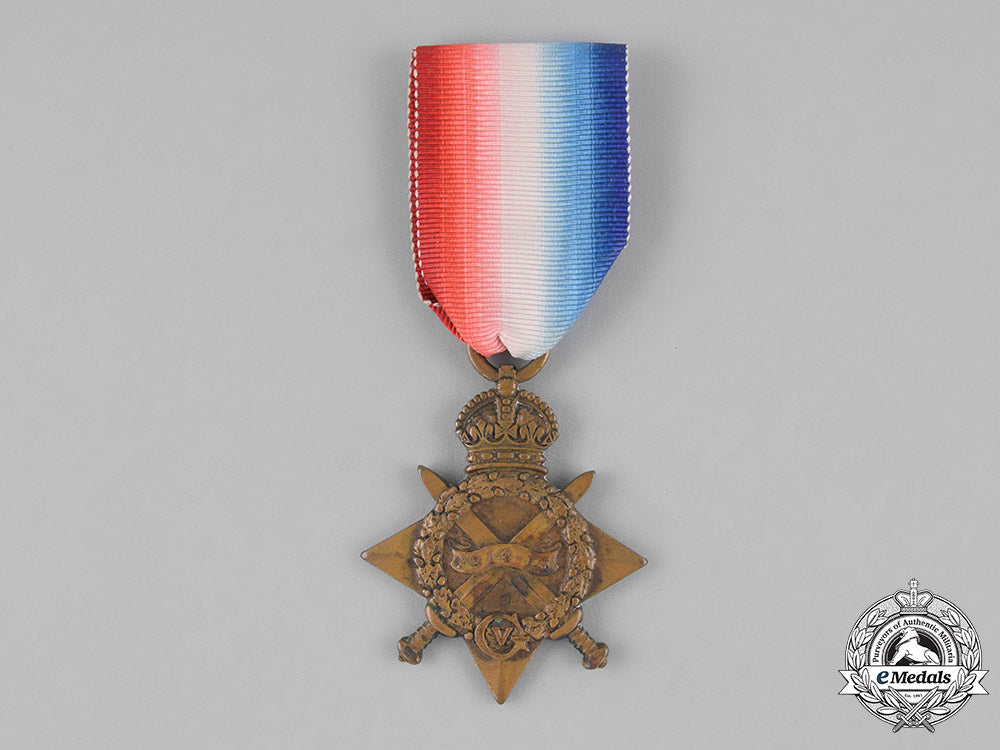
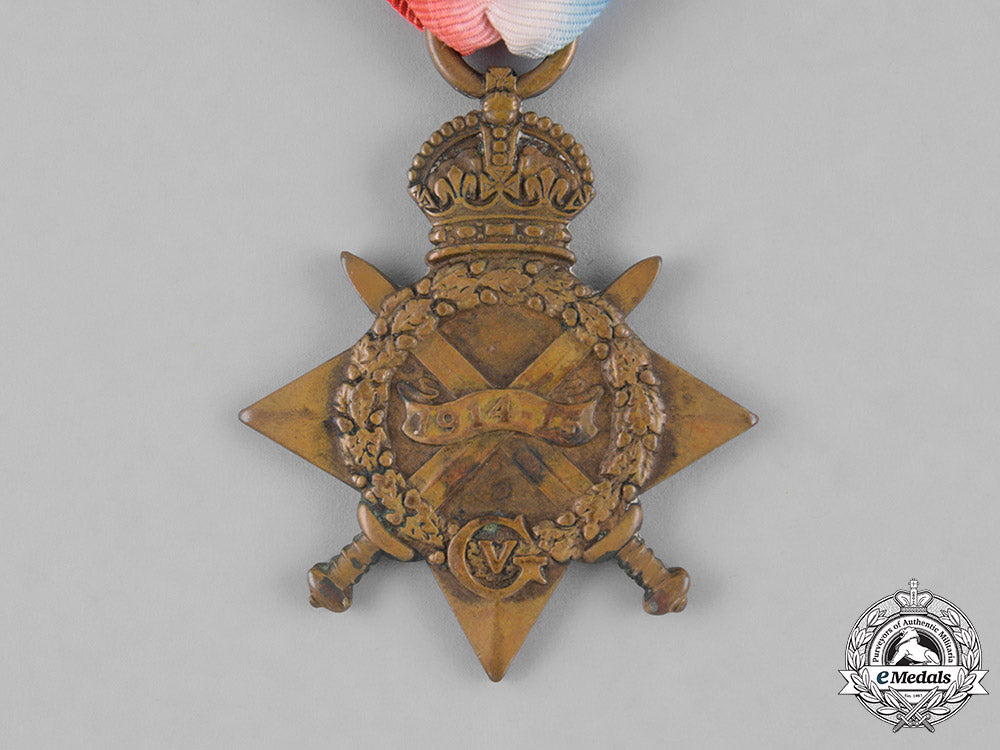

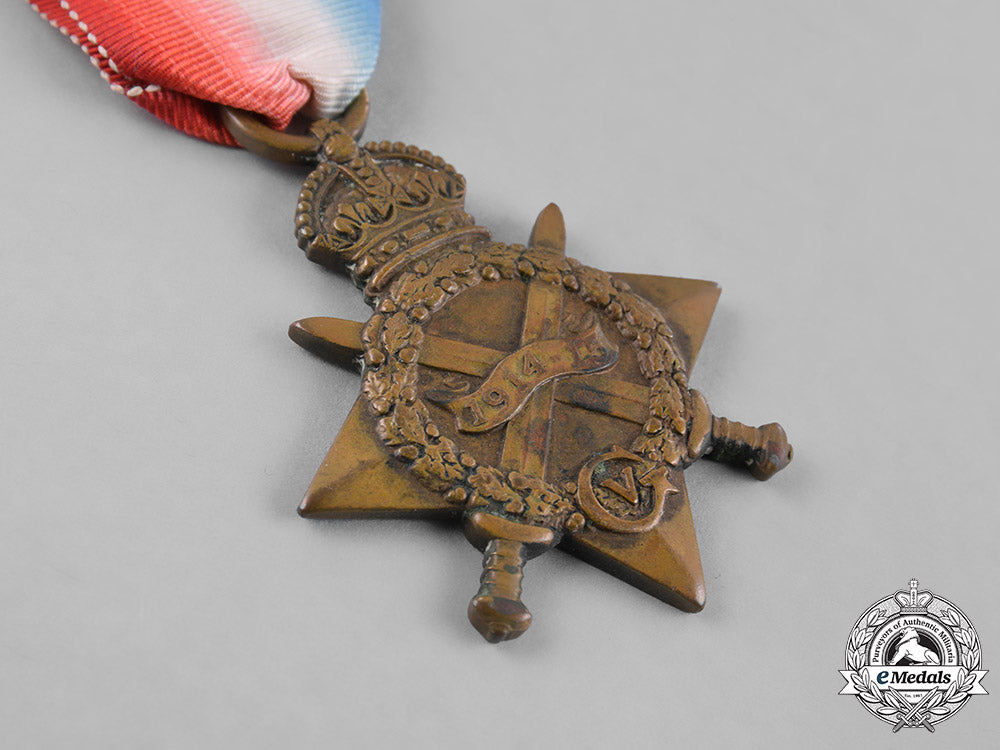
You May Also Like
Japan, Empire. A T90 Civil Defense Helmet, c.1943
W8287
Germany, SA. A Model 1933 Service Dagger, SA-Gruppe Nordsee, by Friedrich von der Kohlen
G59818
Germany, SA. A Model 1933 Service Dagger, SA-Gruppe Pommern, by Gustav Wirth
G59816
Germany, Third Reich. A Mixed Lot of Tyrolean Marksmanship Badges
G52930
Germany, SS. An Estonian Waffen-SS Volunteer’s Sleeve Shield
G50381
-
Japan, Empire. A T90 Civil Defense Helmet, c.1943
W8287
Add to CartRegular price $275 USDRegular price $0 USD Sale price $275 USDUnit price / per -
Germany, SA. A Model 1933 Service Dagger, SA-Gruppe Nordsee, by Friedrich von der Kohlen
G59818
Add to CartRegular price $980 USDRegular price $0 USD Sale price $980 USDUnit price / per -
Germany, SA. A Model 1933 Service Dagger, SA-Gruppe Pommern, by Gustav Wirth
G59816
Add to CartRegular price $980 USDRegular price $0 USD Sale price $980 USDUnit price / per -
Germany, Third Reich. A Mixed Lot of Tyrolean Marksmanship Badges
G52930
Add to CartRegular price $135 USDRegular price $0 USD Sale price $135 USDUnit price / per -
Germany, SS. An Estonian Waffen-SS Volunteer’s Sleeve Shield
G50381
Add to CartRegular price $150 USDRegular price $0 USD Sale price $150 USDUnit price / per
Do you have a similar item you are interested in selling?
Please complete the form and our client care representatives will contact you.
Sell Item












